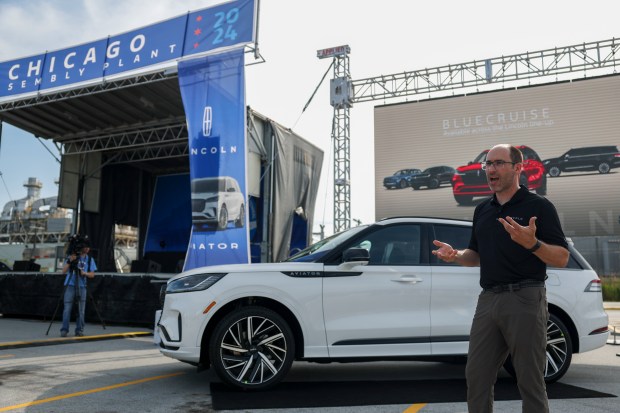When Ford opened its Chicago plant in February 1924 on the banks of the Calumet River in the Hegewisch neighborhood on the city’s Southeast Side, it was the dawn of the automobile age and the mass production assembly line.
A century later, electric vehicles are poised to push aside the gas-powered horseless carriage, but the Chicago Assembly Plant is still going strong as the oldest Ford auto plant in continuous operation.
Built at a cost of about $8 million, the massive Torrence Avenue factory employed 2,000 workers at the outset, with the capacity to turn out 600 “flivvers” — a nickname for the Model T — each day, according to a Chicago Tribune story at the time of its launch.
The new plant built nearly 107,000 Model Ts in its first year and expanded to Ford delivery trucks in 1925. In 1927, it switched to producing the new Ford Model A.
There have been almost 16 million vehicles produced in Chicago over the course of 100 years, including iconic bestsellers such as the Taurus sedan and Explorer SUV, along with a few less successful models, such as the short-lived Ford Freestyle crossover.
The Chicago plant has also produced Ford’s police vehicles since 2012, evolving from Taurus sedans to the Explorer SUVs. The Police Interceptor models are built exclusively at the plant and upfitted for duty at an adjacent facility.
“It’s one of the plants that, with that variety, stands out a little bit,” said Ted Ryan, Ford’s resident historian. “So many plants build one thing. Chicago’s always built a little bit of everything.”
The 2.8 million-square-foot plant, which sits on 113 acres, has navigated ups and downs over the years, building more than 15 nameplates and undergoing several major retooling projects to modernize the facility. It has survived blizzards, strikes, a pandemic, wars, changing tastes, layoffs, plant closures and the inexorable march of time.
While the Chicago plant has a storied history, there have been some lean years where its models weren’t moving, its ranks were thinned and its future seemed to be in doubt. But it always managed to evolve with the industry, and avoid the fate of being decommissioned.
“I’m sure there were time periods where Chicago was on the bubble or was being looked at, but it didn’t happen,” Ryan said.
The Chicago Assembly Plant is hitting on all cylinders at the century mark, with 4,700 workers on three shifts building the Ford Explorer, Lincoln Aviator and Police Interceptor SUVs. This summer, it is beginning to ramp up production of the new 2025 Explorer SUV.
On Sunday, assembly workers who last fall walked off the job during a UAW strike, attended a family open house to celebrate the new Explorer launch and the plant’s centennial.
“Everybody has a lot of pride in the sustainability here in Chicago, and we have a lot of folks that have been here 50-plus years,” said Angela Weathers, 53, a Ford manufacturing veteran who spent time at Kentucky and Michigan plants before becoming manager at the Chicago Assembly Plant three years ago.
Here are some milestones at Ford’s Chicago Assembly Plant during its first century:
1924: Ford opens its new Chicago factory
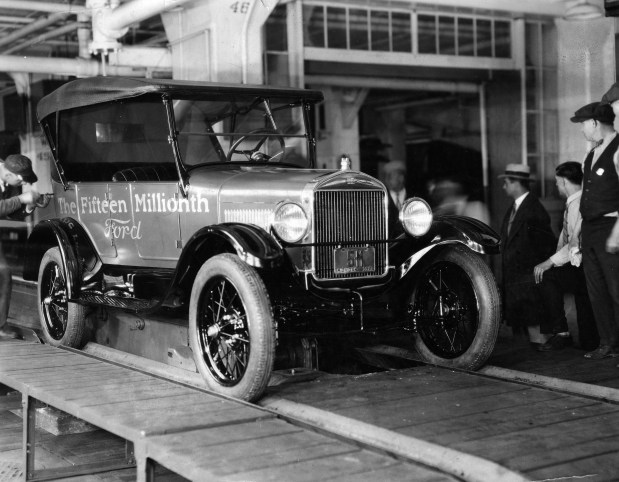
Designed by noted industrial architect Albert Kahn, Ford’s Chicago Assembly Plant was constructed over a year on a sprawling tract of land in the Hegewisch community at 126th Street and Torrence Avenue along the Calumet River. Projected to cost $6 million, the final tab was closer to $8 million when the massive one-story concrete factory opened Feb. 1, 1924.
It supplanted a smaller Chicago facility at 39th Street and Wabash Avenue that built the Model T starting in 1914.
The new plant initially employed 2,000 workers with a capacity to build 600 Model T cars per day. At the time, Ford projected the plant would ultimately ramp up to 6,000 workers building 1,000 cars per day.
While Ford’s Rouge plant in Dearborn, Michigan, is a few years older than Chicago, it began by building boats for the U.S. Navy during World War I in 1918, and switched to tractor production after the war. It didn’t begin building autos until 1927, when the Model A began rolling off the line at both the Dearborn and Chicago plants.
World War II: Chicago Assembly Plant shifts to tanks
Ford’s Chicago auto plant transitioned to a military role during World War II, building 3,791 M20 tanks and 2,126 nimble M8 armored scout cars, known as greyhounds, which were unveiled to the public in March 1944 tearing through the Indiana Dunes.
In 1945, the plant resumed production of passenger vehicles, starting with the utilitarian-sounding Mercury Sedan.
1972: Chicago Assembly Plant builds its 5 millionth vehicle
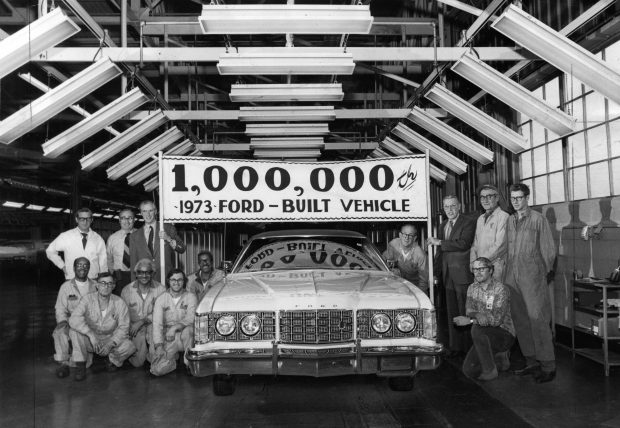
Nearly a half-century after its launch, the Chicago Assembly Plant celebrated the 5 millionth Ford to roll off the assembly line – a Galaxie 500 sedan created for the occasion. The plant built 100 of the Chicago special edition vehicles, which were painted in Gold Fire with a white vinyl roof and included commemorative medallions on the rear roof pillars.
1986: Fading nameplates give way to the game-changing Ford Taurus
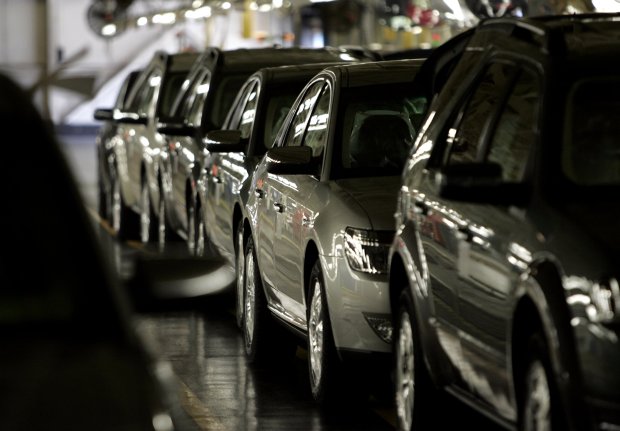
After the Galaxie was retired in 1974, the plant produced a string of well-known nameplates – some past their prime – from the Ford Gran Torino and Thunderbird to the Ford Granada and Mercury Cougar, which were built in Chicago for two years in the early 80s.
Those models were followed by the final run for a downsized Ford LTD and Mercury Marquis from 1983 to 1985. But in 1986, everything changed with a new car that would put the Chicago Assembly Plant back on the automotive map.
The arrival of the sleek Ford Taurus and Mercury Sable sedans was a defining moment in the Chicago plant’s history, which was retooled to launch the front-wheel drive vehicles.
With its aeronautic design, the Taurus was initially derided by competitors as a “jelly bean,” but consumers flocked to its novel styling. By 1992, Taurus was the best-selling car in the U.S., topping the Honda Accord with 409,751 units sold.
By the turn of the century, however, Taurus sales began to lose traction. The Chicago plant underwent a $400 million modernization in 2004, a prelude to the first model change in nearly two decades. In 2006, Taurus was dropped from the Ford lineup and Chicago began producing the new Ford Five Hundred and Mercury Montego.
One year later, Ford resurrected the nameplates, rebranding the 2008 models as Taurus and Sable, but the vehicle’s heyday had passed, and sales continued to sputter.
2010: Ford Explorer SUV moves to Chicago
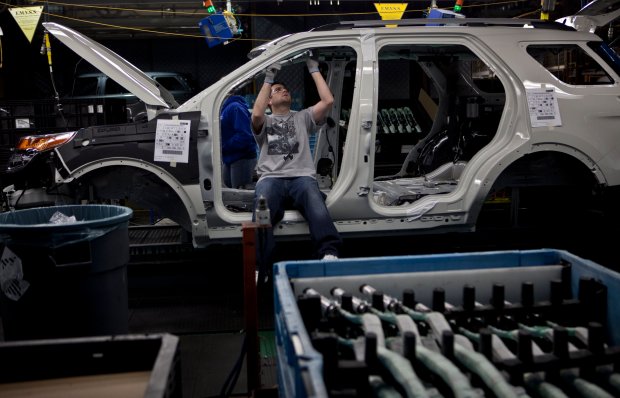
After the Chicago plant got another $180 million investment from Ford, it began production of what would become its signature vehicle of the new millennium.
In 2010, Ford shifted its downsized Explorer SUV from Louisville to its Torrence Avenue assembly plant, where it was built alongside the sixth-generation Ford Taurus and Lincoln MKS on a shared platform. The new made-in-Chicago Explorer featured a unibody design, as opposed to traditional frame-on-body construction, giving it a more carlike ride, while the EcoBoost engine offered improved fuel efficiency without sacrificing power.
Ford’s oldest plant soon found new life as the nexus of the automaker’s SUV production.
2019: Chicago goes all in on SUVs
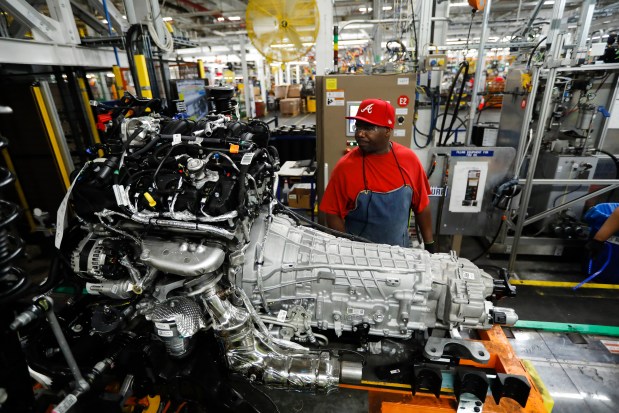
In 2019, Ford spent $1 billion to transform the nearly century-old Torrence Avenue facility, which phased out production of the Taurus sedan to focus on building SUVs, including the Explorer, Lincoln Aviator and Police Interceptor SUVs.
The Explorer, which is now made exclusively at the Chicago Assembly Plant, has become the all-time best-selling SUV, with more than 8 million sold during its three-decade run.
2020: Pandemic disruption
During the pandemic, Ford’s Chicago Assembly Plant experienced several shutdowns and production disruptions. The global semiconductor shortage lingered into 2022, when the plant parked thousands of vehicles at the shuttered Chicagoland Speedway in Joliet awaiting chips before delivering them to dealerships.
2023: UAW strike shuts down plant

In September, Ford’s Chicago plant took center stage during the United Auto Workers six-week strike against the Big Three when its employees walked off the job and onto the picket line. By October, more than 4,600 workers returned to the assembly line after the UAW reached a settlement with Ford on a new four-year labor agreement.
In addition to substantial pay raises and other benefits for workers, the Ford deal also includes a commitment to invest another $400 million in the Chicago Assembly Plant as part of $8.1 billion to be spent across all of its facilities over the next four years.
2024: New Explorer rolls off the line as Chicago plant turns 100

As Ford’s oldest continuously operating auto plant hits the century mark, the Chicago Assembly Plant is ramping up production of the new 2025 Explorer, which is built exclusively on the Southeast Side. The popular SUV is undergoing a significant refresh focused on simplifying the build, improving production quality and enhancing the digital driving experience.
The new Explorer began shipping June 25, with a six-week ramp up to full production, Weathers said. At that point, the line will have the capacity to produce 1,050 vehicles per day, she said — roughly the volume projected a century ago, when the plant first opened.
“People are proud here to say this is the best-selling SUV of all time that is built here, and we just want to continue that streak,” Weathers said.
rchannick@chicagotribune.com


